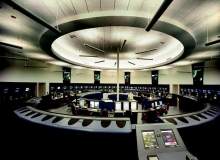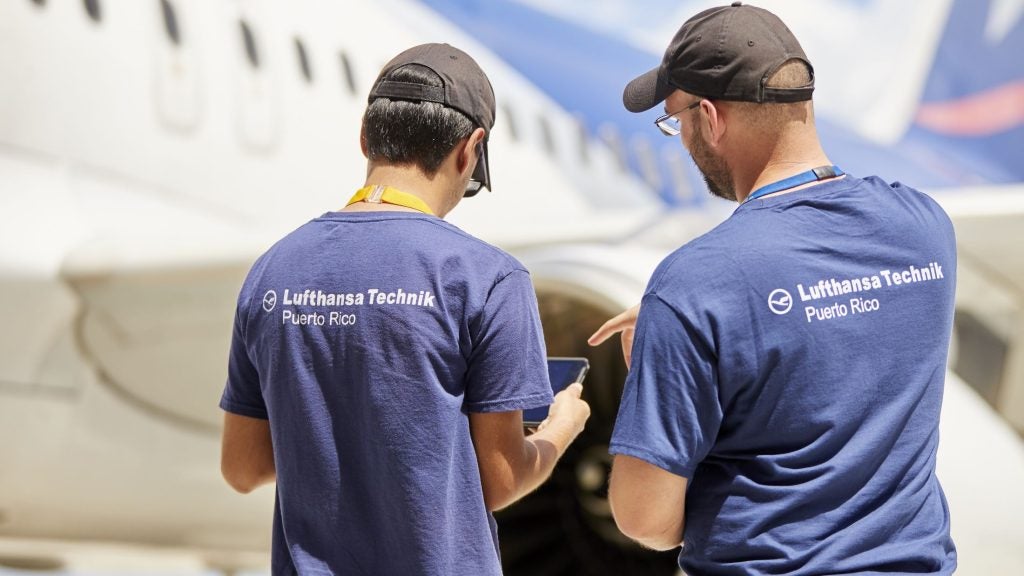
The challenge of meeting NextGen and SES
The European Commission launched its Single European Sky (SES) initiative as long ago as 2004, with the aim to design an integrated EU airspace, hoping to sustain the expected doubling of air traffic by 2025, while halving the route charge cost for each flight.
The American Federal Aviation Administration (FAA), meanwhile, is in the process of installing NextGen – a comprehensive overhaul of the US National Airspace System. According the FAA, it is building the capability to guide and track air traffic more precisely and efficiently to save fuel and reduce noise and pollution. NextGen is better for our environment, and for our economy.
"The future of NextGen and SES (single European sky), technical and operational integration across the globe, harmonisation across international boundaries, the invaluable ICAO Block upgrade concept, Eurocontrol and the FABs, and of course the enormous growth of UAS activity, are all stretching the intellect and challenging the bank balances of ATM providers," asserted CANSO director-general Graham Lake in December 2011.
"In 2012, European air navigation service provider (ANSP) charges must reduce in real terms, and they must do so irrespective of what happens to the volume of air traffic. It is highly probable that passenger demand will slump in Europe and North America in 2012, adding cost pressure to ANSPs at a time when investment in NextGen and SES should be ramping up," Lake claimed.
He said it is a time for international players to partner for progress, as global uncertainties and cost pressures "strengthen the case for consolidation and collaboration in ATM".
See Also:
The Pan European Network Service, or PENS, which resulted from the formation of SES, will potentially allow 38 European ANSPs to mostly eliminate dedicated voice and data international leased lines, yielding more than 15% costs savings a year.
How well do you really know your competitors?
Access the most comprehensive Company Profiles on the market, powered by GlobalData. Save hours of research. Gain competitive edge.

Thank you!
Your download email will arrive shortly
Not ready to buy yet? Download a free sample
We are confident about the unique quality of our Company Profiles. However, we want you to make the most beneficial decision for your business, so we offer a free sample that you can download by submitting the below form
By GlobalDataThis is according to SITA (Société Internationale de Télécommunications Aéronautiques) – the world leader in air transport communications and IT – which claimed PENS will also provide a platform for the introduction of various other pan-European applications, yielding further cost savings.
Overcoming aerospace sustainability issues
The ATM industry represents the best way of overcoming the various environmental challenges raised by a rapidly growing global aviation industry, which is set to be laden with environmentally-motivated taxes and legislation in an attempt to curb emissions and other environmental impacts.
By optimising performance, fuel efficiency and safety, while simultaneously reducing the environmental impact of aviation, ATM solutions are rising to the challenge through solutions encompassed by the creation of the SES ATM research programme (SESAR).
These include collaborative decision-making, airborne separation assistance systems, arrival and departure management systems and the advent of precision required navigation (P-RNAV) performance procedures.
The EU’s new carbon emissions tax for airlines, meanwhile, which came into effect on 1 January, has met with staunch international opposition and defiance from various regions, including China and the US, but the region appears determined to push ahead with CO2 emissions certificates for airlines flying to or from Europe.
Connie Hedegaard, European commissioner for climate change, was quoted as saying: "If this law leads to what could not be agreed before, namely a global system, then it’s a very good perspective. But if anybody thinks they can threaten Europe to abolish its own laws, then they are underestimating Europe."
ATM technologies can go a long way to assisting airlines to fall in line with these new regulations and reduce the need for this type of tax implementation.
Future technology for safety, efficiency and cost-effectiveness
According to some detractors, SES and NextGen are attempting to dictate the products and technologies which will deliver a safer, more efficient, more environmentally responsible ATM service, while many in the industry believe the product is not the important part.
At the CANSO annual general meeting last June, in 2011, an important change of emphasis was made, with an agreement that both NextGen in the US and SESAR in Europe are not the solution for an industry, in the words of skyguide’s Daniel Weder, "at the end of its business cycle".
Dubai Airports’ Paul Griffiths claimed that only significant changes can prevent ATM from being seen as an impediment to growth, with other industries proving that technology is devolving from the centre to the edge. In other words, becoming more freely available.
According to an ATC Global press release: "What was once an asymmetric relationship where the ground told the aircraft what to do is now a situation where the airframe has more intelligence and more ability to plan and control its trajectory than the ground-based controller. For those who believe ATM is a service, not a product, then it follows that everyone should be focusing on letting services flourish, not bringing all service delivery down to proscribed products."
Digital age lands
SITA claimed change is on the way, after decades of reliance on the same international ATC communications infrastructure.
SITA believes that ANSPs need to work collectively to modernise the industry’s international ATC systems through a move to IP-based networks. The society pointed out that the older X.25 services upon which the majority of international ATC communications are based are being phased out, while next generation ATM systems are no longer being delivered with X.25 capabilities.
Integration key to efficiency
Airbus subsidiary Airbus ProSky has unveiled a powerful airport surface management system, or SMAN, to complement its ATM offerings at ATC centres as international airports seek to achieve more eco-efficient ground operations.
SMAN, designed by German company ATRiCS for environmental efficiency, offers unique features including green taxiway lights that automatically light up in front of the plane to guide the pilot along the correct route.
According to Eric Stefanello, CEO of Airbus ProSky: "Airbus ProSky is bringing together intelligent ATM components which offer the highest level of performance improvements."
Wolfgang Hatzack, ATRiCS CEO, agreed and added: "Airbus ProSky and ATRiCS share a common goal for improving the efficiency of our airport and aviation systems."
Technology raises the bar for safety
Technological advances such as airborne separation assistance systems, arrival and departure management systems and P-RNAV performance procedures brought about by SESAR all improve ATM safety by minimising the possibility of human error in complex systems.
With rising air traffic volumes, air traffic controllers are being placed under increasing stress to ensure the safety of passengers at all stages of their flight.
This is evinced by a number of accidents resulting from controller fatigue, with Mark Rosenker, chairman of the US National Transportation Safety Board, citing four incidents in the years leading up to 2007 that "provide clear and compelling evidence" that controllers’ demanding schedules led to them working whilst fatigued in some instances.
Rosenker and Doug Church, spokesman for the National Air Traffic Controllers Association, agreed that this directly led to incidents like the 2007 San Fransisco International Airport runway incursion, where two planes almost collided at a runway intersection, and the 2002 Überlingen mid-air collision, where 71 passengers in the two planes were killed when the controller was unable to cope with manning two stations at once while his colleague rested.
In the first four months of 2011 alone, six controllers were suspended for sleeping on the job, illustrating that these issues are far from resolved.
However, the expansion of satellite navigation and landing technology not only allows for far more precise plane location, but also removes the pressure from the controllers by providing them with more accurate information on the planes in the sky.
ATC Global 2012
The ATC Global Exhibition and Conference, the world’s largest ATM exhibition, will be more crucial in its 22nd year than ever before, due to – as Lake said – the urgent need for partnerships, consolidation and cooperation within the industry.
Featuring 220 exhibitors and more than 45 free educational sessions, ATC Global aims to build relationships, discover products, services and technologies and present a global perspective on ATM industry issues, trends and progress, including remote towers, the use of open standards in ATM modernisation and FABEC’s route to daily operations.
According to organisers, the CEO-level conference for more than 5,400 representatives from 120 countries, meanwhile, will break new ground in bringing together key decision-makers from across the globe at a pivotal point in the rollout of next generation global ATM systems, to "assess whether today’s ATM programmes will meet the challenges of tomorrow".
ATC Global workshops offer detailed focus on industry trends
At ATC Global 2012, an in-depth workshop will look at how international open standards can be used alongside domain-specific information exchange standards to satisfy the aviation industry’s operational needs, as well as analysing current standardisation efforts and their impact on ATM modernisation.
According to ATC Global, ANSPs view remote operations as the future for ATM. With this in mind, another workshop at ATC Global 2012 will seek to, among other things, educate attendees on how technology is used in remote tower operations, discuss strategies surrounding the HR implications of remote tower operations and understand how integration enables remote tower operations.
FABEC, the Central European Functional Airspace Block (FAB), will also be addressed in its full complexity, encompassing cross-border airspace design projects and close civil-military cooperation, with the workshop focusing on how to implement its grand ambitions alongside the daily operations of the ten current FABEC member ANSPs.





